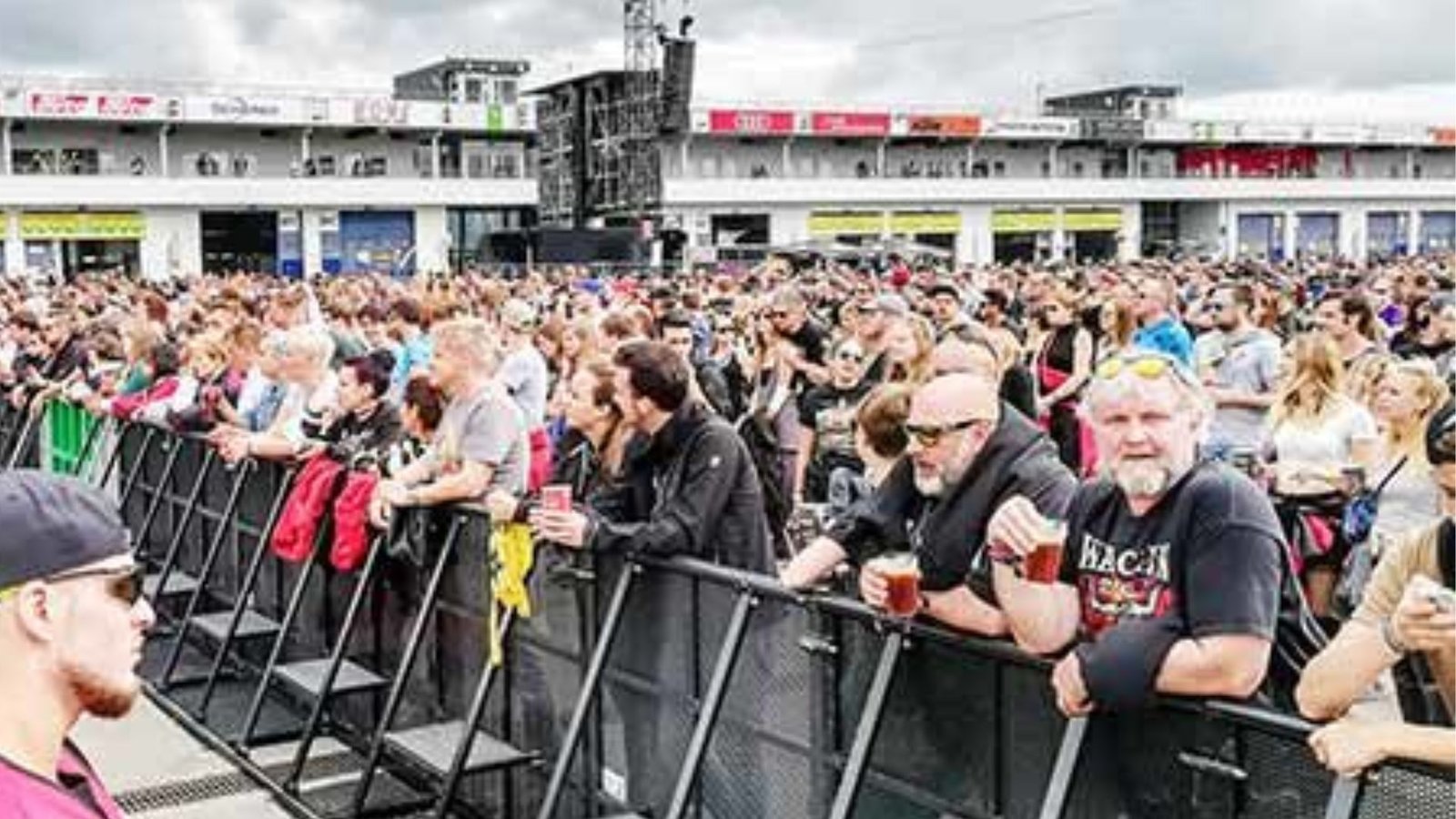Large gatherings bring people together for celebrations, sports, or cultural events. These occasions create a sense of community while also introducing potential risks. Managing the flow of attendees requires both planning and physical safeguards. Without effective systems, even minor disruptions can escalate into serious problems. Organizers must balance safety with accessibility to maintain a positive experience. When structured well, safety measures build confidence among participants.
The success of any major event depends heavily on crowd control strategies. Coordinated designs help prevent overcrowding and reduce panic in emergencies. Perimeter safety measures also play a vital role in protecting attendees from external threats. Planning must consider both the movement of people and the control of vehicles. A secure environment ensures the focus stays on the purpose of the gathering. Every effective event strategy merges safety, organization, and adaptability.
Designing Safer Perimeters
Establishing clear boundaries is crucial for keeping large gatherings secure. Barriers guide foot traffic and define entry points while also discouraging unauthorized access. The placement of these boundaries can determine how smoothly crowds move throughout the space. Well-planned perimeters prevent confusion and allow security teams to monitor entry zones more effectively. The use of security cable barriers is one method that strengthens perimeter defenses without creating unnecessary obstruction. These barriers resist impact, making them practical for both pedestrian and vehicle safety. With proper installation, they blend into the environment while enhancing overall protection. Their role is not only physical but also psychological, reinforcing a visible sense of security.
Crowd management strategies often rely on flexible infrastructure that can adapt to the size and nature of the event. Organizers must account for emergency access while also preventing unregulated entry. Positioning clear signage around perimeters helps visitors understand movement flow. Visual cues reduce hesitation and keep attendees calm in high-traffic areas. Security teams use these controlled zones to screen entrances more efficiently. This layered approach allows for both proactive monitoring and reactive responses when necessary. By combining physical infrastructure with communication, events gain stronger resilience. The combination of structure and clarity keeps environments safer for all participants.
Also Read : Crypto30x.com TNT Utility Token, 30× Leverage, and Safety
Managing Controlled Entry Points
Entry points are often the most vulnerable areas during large events. They require careful design to maintain both security and convenience for attendees. Organizers must minimize bottlenecks while preventing unauthorized access. Flexible gate systems provide a solution that balances flow with control. For example, bi folding speed gates allow rapid entry while maintaining a strong barrier against intrusion. These gates integrate well with ticketing or scanning systems to reduce wait times. Their ability to open and close quickly ensures that emergency adjustments can be made instantly. By incorporating them into event planning, organizers protect both the perimeter and the guest experience.
Controlled entry reduces tension among attendees by creating a predictable and efficient process. Trained staff stationed near these points reinforce the effectiveness of the physical barriers. Communication between teams at different gates ensures faster responses if issues arise. Technology such as surveillance cameras enhances visibility and supports security staff. Organizers who prioritize well-managed entry points lower the risk of overcrowding. Smooth arrivals and departures reduce frustration, which in turn improves public safety. Every decision regarding entry affects the overall atmosphere of the gathering. Strategic gate design ultimately enhances both confidence and protection.
Also Read : Best AI Talking Photo Tools of 2025
Preventing Vehicle Intrusions
Vehicles present a serious risk to large gatherings if left unmanaged. Proper defenses are essential for protecting people from accidental or intentional intrusions. Security planning should always consider points where vehicles and pedestrians intersect. One of the most effective methods involves using reinforced barriers that block access at critical points. The vehicle wedge barrier is a strong example, providing reliable stopping power when installed at vulnerable zones. Its strength comes from its ability to withstand force while remaining unobtrusive to pedestrians. Such barriers allow organizers to focus on event flow without sacrificing safety. Their presence reassures both attendees and staff that threats are being actively addressed.
Integrating vehicle defenses into event design requires foresight and coordination. Organizers must evaluate traffic routes leading into and out of venues. Parking zones need separation from main gathering spaces to minimize risks. Event teams should collaborate with local authorities to manage emergency access. Clear communication with the public about where vehicles can and cannot enter supports compliance. The presence of visible security features also acts as a deterrent to potential threats. Combined with staff vigilance, these systems create a safer overall environment. Planning vehicle control with precision is key to comprehensive crowd safety.
Integrating Technology with Security Measures
Technology enhances perimeter security by offering real-time monitoring and communication. Surveillance cameras placed around key points provide visibility across wide areas. Crowd movement can be analyzed to predict potential congestion before it escalates. Mobile applications allow staff to share updates instantly, reducing response time. Digital systems linked to physical barriers create a layered defense approach. Alarms and detection sensors help identify breaches quickly. The integration of technology ensures that security plans remain dynamic and adaptive. When supported by well-trained personnel, these tools elevate overall event safety.
Organizers also benefit from predictive data analysis that supports proactive planning. Historical event data can be used to anticipate crowd sizes and peak entry times. This information informs gate staffing, barrier placement, and evacuation planning. Advanced software models simulate different scenarios to strengthen preparation. By combining analytics with ground observations, security teams stay one step ahead. Technology also improves communication with attendees through announcements and digital signage. Clear instructions reduce confusion and promote orderly movement. The synergy of human oversight and technology creates an environment where safety is prioritized at every stage.
Building Confidence Through Visible Safety
Attendees feel more secure when safety measures are visible and clearly enforced. Seeing barriers, staff, and organized entry points reassures them that their well-being is taken seriously. A visible presence also discourages disruptive behavior and signals preparedness. Balanced design ensures that security does not overshadow the celebratory nature of the event. The right blend of protection and openness enhances trust among visitors. This balance helps maintain a welcoming atmosphere while safeguarding everyone inside. Security should remain firm without appearing overwhelming or intrusive. Confidence grows when safety is both present and approachable.
Visible safety features also empower staff to manage crowds more effectively. Trained personnel act as guides who complement the infrastructure. Their presence adds a human layer of reassurance that technology alone cannot provide. Attendees are more likely to follow directions when communication feels direct and approachable. Staff visibility ensures rapid intervention in case of disruptions. Effective teamwork between infrastructure and personnel builds a comprehensive system. When all safety elements operate seamlessly, events run smoothly from start to finish. The outcome is a secure environment that strengthens the reputation of the venue and organizers alike.
Final Thoughts
Large gatherings succeed when security planning is prioritized from the earliest stages. Every decision regarding barriers, gates, and traffic control affects overall safety. Effective strategies reduce risks while allowing celebrations to proceed with ease. Planning is not about restricting enjoyment but rather about enabling it safely. Attendees experience peace of mind when they see evidence of well-considered protection. Organizers who commit to layered security approaches set higher standards for event management. Confidence builds when safety is clear, effective, and adaptive. The success of an event lies not only in the experience but also in the security that supports it.
Perimeter safety and crowd management go hand in hand for all large gatherings. Strong infrastructure combined with trained personnel keeps environments controlled and welcoming. When vehicle control, entry management, and monitoring systems align, risks decrease significantly. Each measure works best when integrated with the others as part of a cohesive plan. The long-term benefit is trust between the public and event organizers. Attendees will return to venues where they feel protected without being restricted. A safe environment enhances the reputation of both the event and the community hosting it. Security designed with foresight ensures gatherings remain both memorable and safe.










